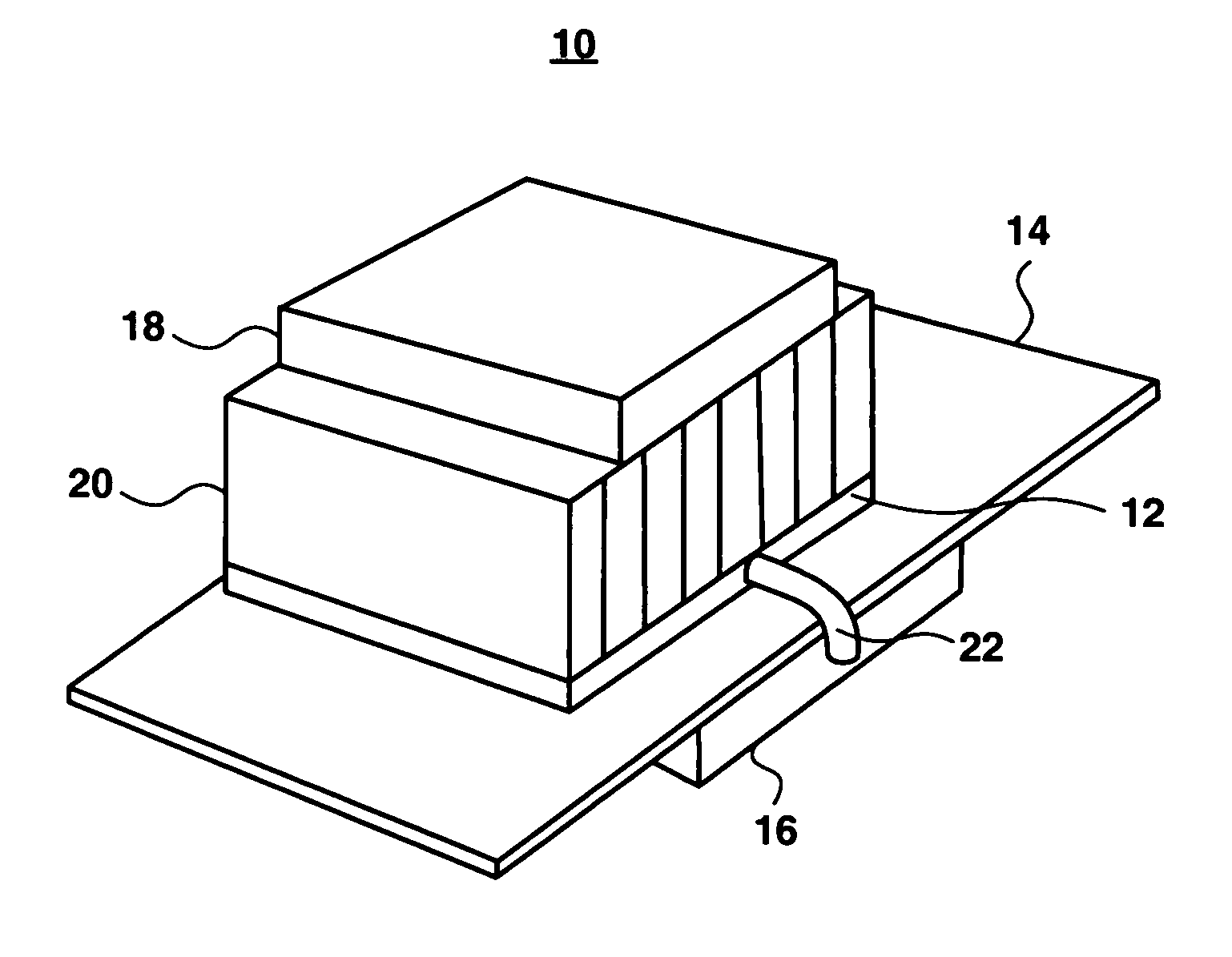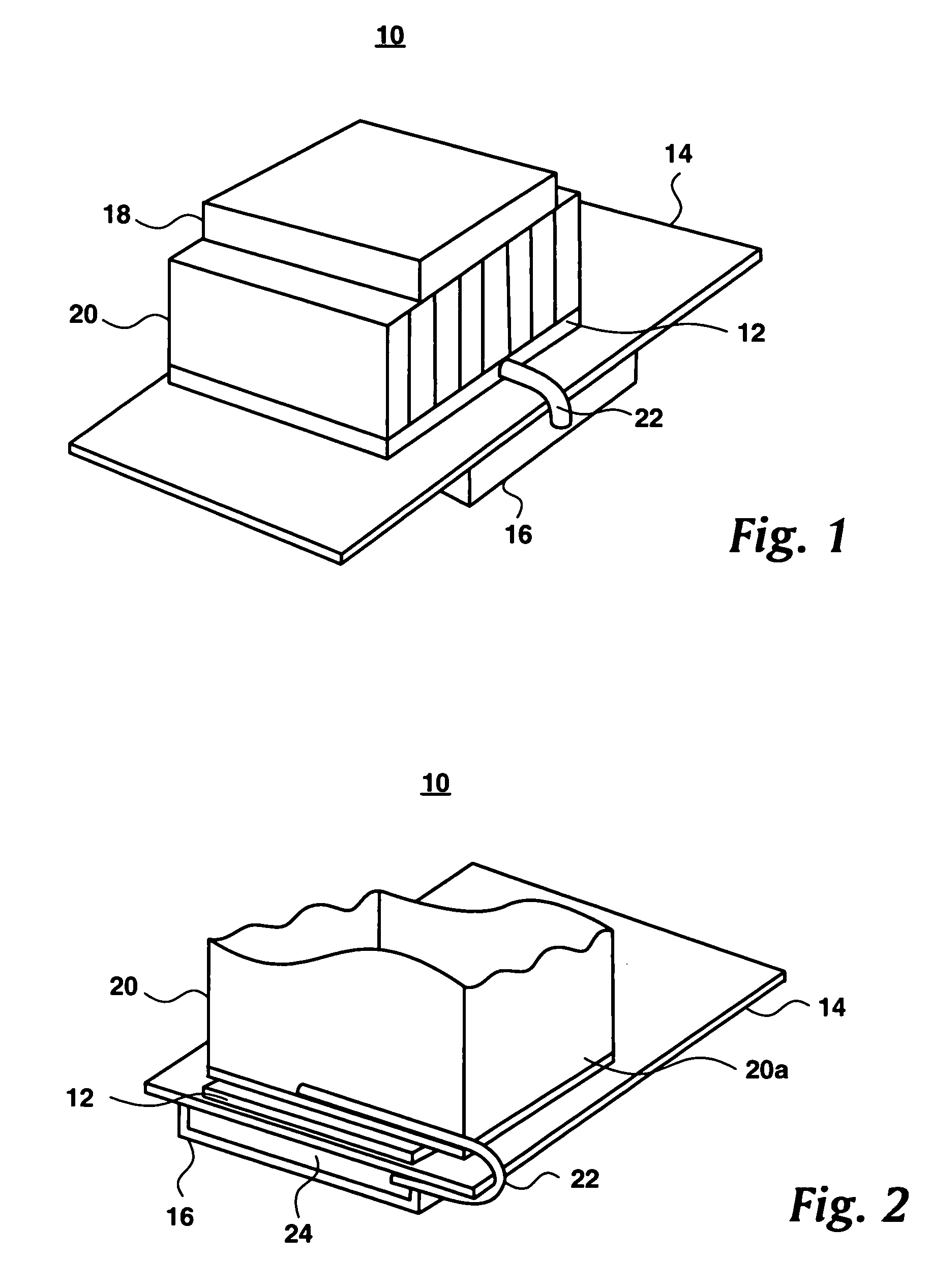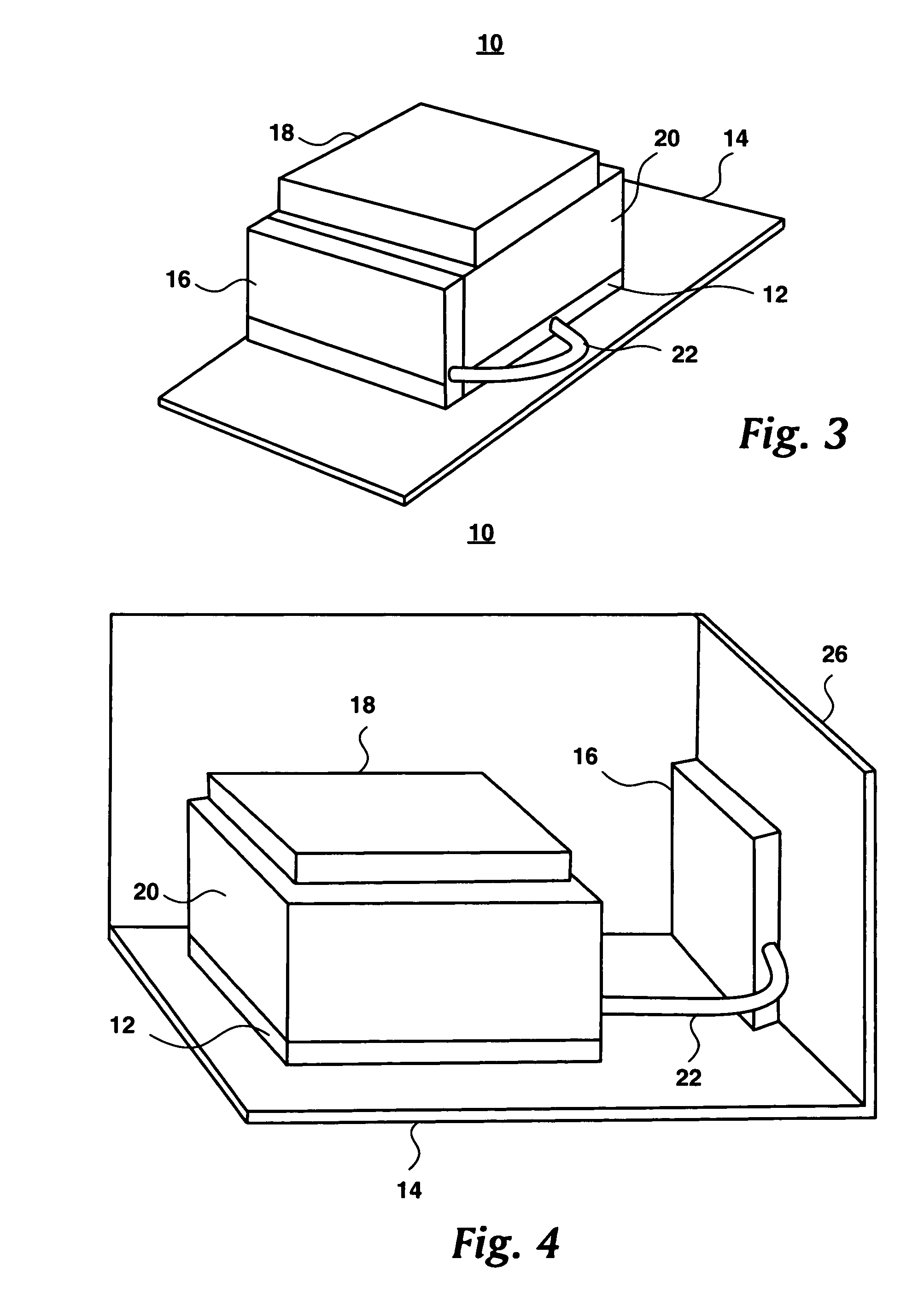Acoustic and thermal energy management system
a technology of acoustic and thermal energy management and a control system, which is applied in the direction of lighting, heating apparatus, and electrical equipment casings/cabinets/drawers, etc., can solve the problems of increasing the noise level of the computer system, increasing the power consumption of the fan, and cpu producing large amounts of heat during operation, so as to reduce eliminate the use of the fan. , the effect of reducing the operation level of the fan
- Summary
- Abstract
- Description
- Claims
- Application Information
AI Technical Summary
Benefits of technology
Problems solved by technology
Method used
Image
Examples
Embodiment Construction
[0022]Refer now to the drawings wherein depicted elements are not necessarily shown to scale and wherein like or similar elements are designated by the same reference numeral through the several views.
[0023]FIG. 1 is a schematic drawing of the acoustic and thermal energy management system of the present invention generally designated by the numeral 10. System 10 includes a central processing unit (“CPU”) 12, or microprocessor identified as a CPU, a motherboard 14, and a thermal mass 16 connected to CPU 12 via a thermal coupler 22.
[0024]The present invention may also include a fan 18 and a heat sink 20 that is known in the prior art. Typically heat sink 20 will have a heat sink base 20a which is shown in FIG. 2. FIG. 2 indicates that CPU 12 is contacting the heat sink 20 and is located below heat sink base 20a. As shown in FIGS. 1, 3, and 4 heat sink base 20a is included in heat sink 20 and not shown separately so that CPU 12, as the heat generating device, may be more clearly shown....
PUM
 Login to View More
Login to View More Abstract
Description
Claims
Application Information
 Login to View More
Login to View More - R&D
- Intellectual Property
- Life Sciences
- Materials
- Tech Scout
- Unparalleled Data Quality
- Higher Quality Content
- 60% Fewer Hallucinations
Browse by: Latest US Patents, China's latest patents, Technical Efficacy Thesaurus, Application Domain, Technology Topic, Popular Technical Reports.
© 2025 PatSnap. All rights reserved.Legal|Privacy policy|Modern Slavery Act Transparency Statement|Sitemap|About US| Contact US: help@patsnap.com



